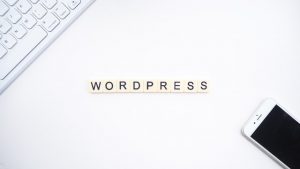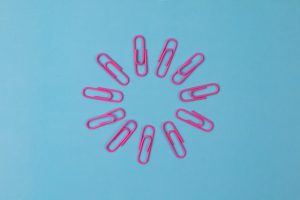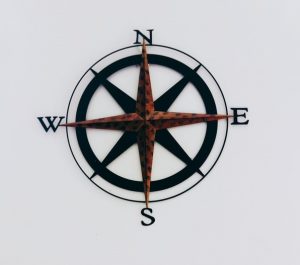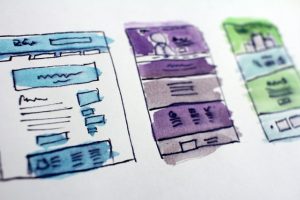A permalink or permanent link is a URL created uniquely for every web page of a site. It’s recommended that you name the URL relevant to the site so that it is easy to remember and meaningful. WordPress allows you to decide the amount of company information to be displayed in your website URL and the ability to tailor the appearance and hierarchy levels within this URL address. You can compile an easy-to-read page title/name, making it easier for visitors and search engines to identify your page’s purpose and products.
Every page is assigned an id number by default, which is displayed at the end of that page’s URL. These digits do not reflect the page’s content, but you can customize the URL’s appearance in WordPress. For example, in settings, you can select “Post Name” to display the page name instead of the default page ID number. Your page keeps the ID number, which may be a useful reference during later backend work.
Similar to your PC, your website can be organized in a directory with sub-directory folders, creating better organization and navigation around the site. However, if you require a simple site with few pages, you may not need subdirectories.
A site map represents an overview of all the pages on your site and should be structured in a way that is easy to understand. The complexity of your site map depends on the more web pages, features you require. This will require more planning so that your site is organized, easy to find and navigate.
One of the most significant elements of your website is the menu. It should be strategically placed and easily accessible. A menu is a permanent item and should assist, not hinder, navigation around your site. You could lose customers if a user cannot navigate your website, or if they become confused or frustrated with its lack of functionality. The most important items should appear at the top of the page menu with links connecting your site’s pages. In mobile view, a menu often converts to a pop-up/accordion so consider the end-user when creating the menu interface. We humans appreciate dashboards that offer several features without millions of buttons and instructions! Your menu should be straightforward and contain essential items unless you’re dealing with a vast site with masses of content and technical design where drop-down menus and second-tier menus may be necessary. You could add the remaining site links at the bottom of the page in the footer. It is useful to include a site map if your footer cannot contain all the site’s links and sub-menu pages created for categories with many links. You can connect these to the main category page where a new chain of links could be created and displayed. Other websites, car, or TV menus may also provide some inspiration for creating complex menu designs, layouts, and contents.
Breadcrumbs help identify a page’s path. With enough content, you can categorize and allocate certain pages under the relevant category group. This can include the types and colors of a product, for example, and breadcrumbs would show these categories. Website visitors will find it easier to navigate your site when it is well organized, grouped, and categorized. The organization of categories and subcategories can also assist your WordPress site with SEO. Like site maps, breadcrumbs may not be necessary if your site comprises a few pages and links. Breadcrumbs can complicate a small website but improve navigation of larger sites.
WordPress has pre-installed themes that change every year with improvements over time. These offer basic customization features. Alternative free and premium options are also available to assist Your design beyond the basic themes. Free options may require some knowledge of customization relating to codework while premium themes offer sufficient control over the elements. More customized themes may employ extra systems resources and slow down your site – something you want to avoid! To increase efficiency and speed, avoid installing or enabling any unnecessary additional features. Minimalist themes that use fewer resources are available but may be more challenging for a beginner to customize. Remember, your website is one element of your brand’s design. Your chosen theme should also align with other marketing practices, including printing materials and social media platforms.
Compression of images is sometimes recommended as it saves space and reduces the size of an image, leading to faster loading times. However, image compression also reduces image quality. Aside from compression, it’s a good idea to select the best image format for your images. An example is a vector image comprising of few colors which can be optimized to display fewer colors. Regarding image size, display the smallest size possible and do not increase unnecessarily. Smaller images scaled to the lowest possible color variation will keep the highest quality.
A web page can appear cluttered because of too many elements, poor spacing, and uncoordinated positioning. Follow a theme comprising similar elements in similar positions throughout your site to achieve consistency and structure. Colors are especially important. Color clashes and inconsistency can confuse navigation around your site and increase the cluttered look. Information and messages should contrast with their backgrounds, so they are clearer and easier to read. Similarly, dark text over dark images should have a highlighted background to clarify the text and ease readability.
WordPress is a clever system. It is possible to customize the site’s header and footer in many themes, meaning you enter this data just once. The header usually comprises the site’s logo and navigation menu while additional information, menu items, and contact details can be displayed in the footer. Look at other business and competitor websites for inspiration when designing layouts and color schemes for your site.
Remember to keep backups of your site, as you progress during the initial set-up, major changes, and updates. You can decide if daily or weekly backups are necessary when you’ve finished the development and tweaking stages. Many free backup options are available and can be viewed under the admin bar/plugins/add plugins.
Do you have a favorite WordPress feature or site approach you would like to share? Please let us know or share a comment!






